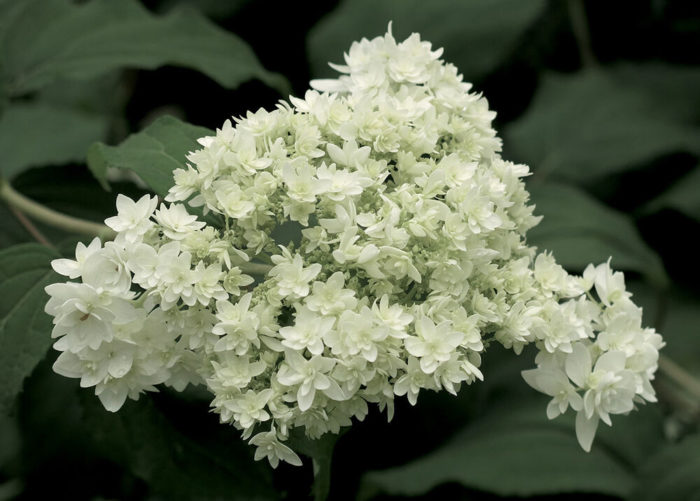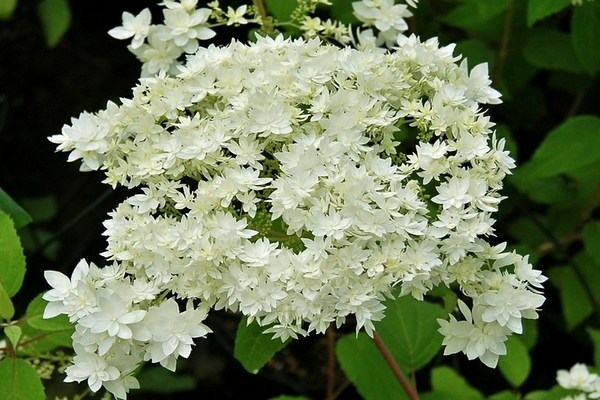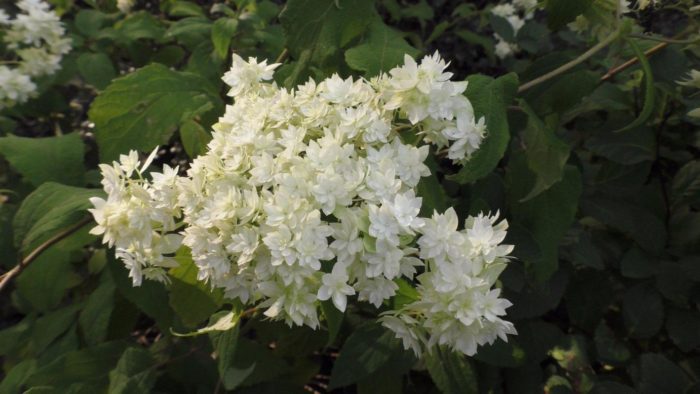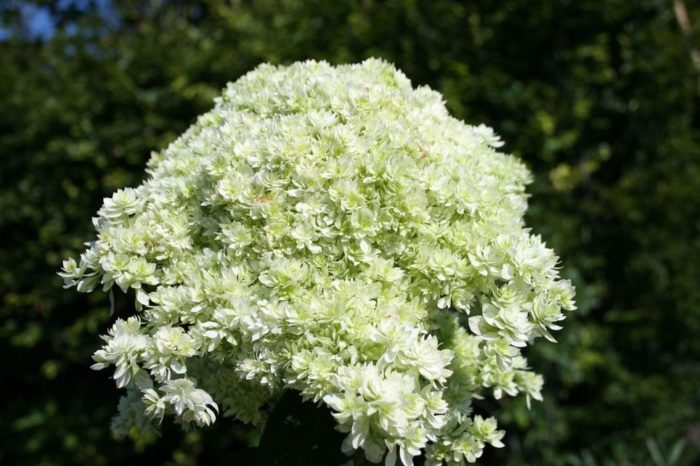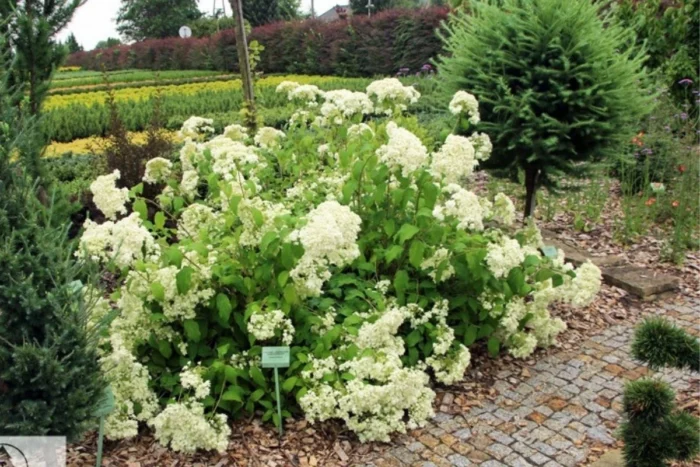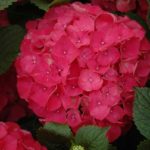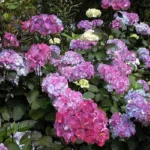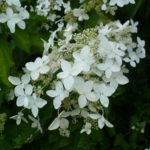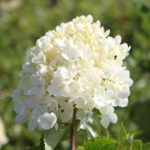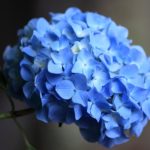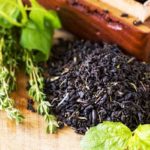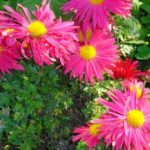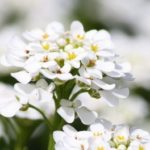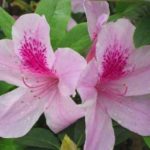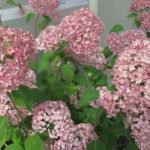This variety of hydrangea differs from related tree-like varieties in its double flowers, which form unusually lush inflorescences. The birthplace of the tree hydrangea Hayes Starburst is Alabama, USA. This variety is highly decorative, long flowering and undemanding in care. However, there are some growing nuances that you need to know so that the plant blooms magnificently and does not get sick.
- Description of Hydrangea tree Hayes Starburst
- Application in landscape design
- Winter hardiness of terry hydrangea Hayes Starburst
- Planting and care
- Selection and preparation of a landing site
- Landing rules
- Watering and fertilizing
- Trimming
- Preparing for winter
- Propagation of Hydrangea Hayes Starburst
- Diseases and pests: prevention and treatment
Description of Hydrangea tree Hayes Starburst
Tree hydrangeas grow naturally in North America, China, Southeast Asia, and the Japanese Islands. This particular variety is American, and it was not specially bred. It appeared independently, the result of a successful natural mutation of the common Annabelle variety. Therefore, another name for the variety is Terry Annabelle. Apart from this variety, there are no double varieties of tree hydrangea. In other words, Hayes Starburst is a unique variety, which is why it is extremely popular.
The name Hayes Starburst translates as “Hayes starburst” or “Hayes starburst.” Hayes Jackson is a gardener who discovered a mutated hydrangea in his own garden in Alabama. The term starburst is very suitable for a plant whose inflorescences really resemble a scattering of stars.
The bush of this hydrangea is compact, but looks lush. With a height of up to 120 cm, its diameter can reach up to 150 cm. The crown is spreading, while the shoots are unusually thin and fragile. The leaves are large, elongated, ovate, 8-20 cm long, and have denticles along the edges. The front surface of the leaf blades is rich green, with a slight velvety feel. The lower surface is smooth, silvery-gray.
Hydrangea Hayes Starburst blooms from June to the end of September. Flowers form on this year's shoots. Large inflorescences have a corymbose shape, but are not symmetrical. They reach 20-25 cm in diameter. Most often they are spherical in shape, less often they are in the form of a hemisphere or a cut pyramid. The inflorescence consists of many small flowers, not exceeding 3 cm in diameter. They have double petals with sharp ends. A significant part of the flowers are sterile.
The color nuances of Hydrangea Hayes Starburst flowers are interesting. The Annabelle variety is known to be snow-white. However, Hayes Starburst flowers are not as white. Depending on growing conditions, they can be milky white or cream. Moreover, immediately after the buds open, the petals have a faint green tint, and when the flowers approach wilting, they acquire a slight pinkish tint.
The fruits of tree hydrangea are formed in September. They are small brown boxes. They contain small achenes.
The inflorescences of Hydrangea Hayes Starburst have a significant drawback - they bend towards the ground due to the weakness and thinness of the shoots. In general, in all varieties of hydrangea, the shoots bend under the weight of lush inflorescences, and in Hayes Starburst this problem is even more pronounced. Even if the weather is calm and there is no precipitation, the shoots bend. And if they become heavy due to raindrops, they generally reach the ground. As a result, beautiful inflorescences turn into something dirty and shapeless. The only solution to the problem is tying up hydrangea shoots. But even after this they will tilt slightly.
Application in landscape design
The Hayes Starburst variety can be used both for group plantings and as a single plant. This hydrangea is in demand for gardening and street landscaping. It can be seen along fences and walls of buildings. Tree hydrangea looks great on lawns and as part of mixborders. Luxurious compositions are obtained by combining tree-like double hydrangea with daylilies, geraniums, phlox, and barberry bushes.
In general, this plant is almost universal, and an additional advantage is its high decorative value and long flowering time. Here's how to use Hydrangea Hayes Starburst in your landscape:
- plant as a background plant behind small elements of the landscape composition;
- create a hedge without molding;
- disguise an unattractive building wall or fence;
- delimit a plot of garden or park;
- make a bright accent in coniferous plantings;
- create a landscape composition with flowering perennials.
Winter hardiness of terry hydrangea Hayes Starburst
Plant sellers claim that the Hayes Starburst variety is winter-hardy. In fact, it is tolerant of the winter conditions of the southeastern United States where it originated. And there the conditions are much softer than here. Even gardening nursery specialists in the USA advise covering Hayes Starburst hydrangea for the winter, especially young plants.
If there is shelter, the plant is able to survive in a temperate climate zone at winter temperatures down to -35°C. But if you do not cover the hydrangea, its thin and tender shoots will freeze. The plant may lose up to 2/3 of its shoots or even die.
Planting and care
How strong and beautifully flowering the plant will be largely depends on the timing and location of planting. Tree hydrangea should be planted in the spring, best from the second half of March to mid-April. In this case, weather conditions must be taken into account. Planting should begin only after the threat of frost has passed. The air temperature should be consistently above +10°C, and the soil should warm up to at least +8°C.
In the southern regions, hydrangea can be planted not only in spring, but also in autumn, in the first half of September. Planting at this time will give the plants enough time to take root and prepare for winter.
Selection and preparation of a landing site
Hydrangea loves the sun. A light openwork shadow is acceptable, but in this case the inflorescences will not be so lush.Despite the light-loving nature of hydrangea, the place for it must be chosen so that the plant is shaded during the midday hours. Otherwise, the leaves and flowers will dry out. It is best to plant hydrangea near a wall or fence. Such a place will additionally protect the plant from the wind, which can break off thin shoots.
The distance between planted hydrangea bushes should be at least 1 m. If trees grow nearby, then the minimum distance to them is 3 m.
The soil should have moderate drainage. Fertility and sufficient saturation with mineral elements and organic matter are extremely important. Sandy loam and loam are optimal. If the soil is clayey or heavy, its structure should be diluted with sand - 20 kg/m2. If the soil is sandy, it is worth adding clay - two 10-liter buckets per 1 m2.
Groundwater in the selected area should lie at a depth of at least 4 m. Hydrangea is moisture-loving, but still not enough to grow in marshy soil. If there is excess moisture, the roots of any plant will begin to rot. You should not plant hydrangea next to other moisture-loving plants, otherwise they will become competitors in drawing moisture from the soil.
Landing rules
For planting, it is advisable to purchase container seedlings: their survival rate is higher due to the protection of the roots. Before planting, the seedling must be removed from the container and placed in a container with water for 2-3 hours. Planting holes must be dug in advance; their optimal size is 60x70 cm.
When planting tree hydrangea, proceed as follows:
- At the bottom of the hole, make a drainage layer from any suitable material.
- Place a layer of soil, a mixture of garden soil, sod and compost, on top of the drainage. Add 100 g of superphosphate, 50 g of potassium nitrate and 300 g of ash to this mixture.
- Lower the seedling into the hole so that the root collar is directly above the soil surface. Fill the hole with soil. Tamp down lightly.
- Water the hydrangea thoroughly. Pour a 10-liter bucket of water under one bush.
- Mulch the soil under the plant with a thick layer of peat.
Watering and fertilizing
The soil under the moisture-loving hydrangea should not be allowed to dry out. On hot days, water the plant 1 or 2 times a week. If the weather is rainy, once a month is enough. 15-20 liters of water should be poured under one adult bush. After watering, be sure to loosen the soil to a depth of 5 cm and weed out the weeds.
You can feed Hayes Starburst hydrangea with any mineral-organic complex for ornamental flowering shrubs. You cannot feed hydrangea with manure, lime, or chalk - these substances reduce the acidity of the soil, which negatively affects the development of plants. Before fertilizing, the soil must be moistened so that the roots do not burn.
It is important to follow the feeding schedule:
- For the first 2 seasons, there is no need to feed young hydrangea, it has enough elements contained in the soil;
- from the 3rd season in the spring, you should fertilize the soil with a phosphorus-nitrogen-potassium mixture;
- at the budding stage it is recommended to use nitroammophoska;
- Every summer month, organic matter should be added to the soil; bird droppings or plant humus will do;
- from August fertilizing with nitrogen is unacceptable; only potassium-phosphorus mixture can be used;
- in the fall it is recommended to treat the shoots with a pale pink manganese solution.
Trimming
For the first 4 seasons, Hayes Starburst hydrangea bushes do not need pruning.In subsequent years, sanitary pruning should be carried out twice a season: in the spring before sap flow and in the fall before the arrival of stable cold weather. It is necessary to cut off diseased, injured, dead shoots, and excess growth. In spring, it is advisable to cut off weak inflorescences so that they do not take away the strength of the plant. And in the fall, faded inflorescences should be promptly removed, and young shoots should be shortened by 3-4 buds.
Preparing for winter
In the south of the country, only seedlings under 3 years of age should be insulated; in other regions, plants require winter insulation regardless of age.
Prepare hydrangea for winter like this:
- Mulch the tree trunk circles with peat.
- Tie the shoots. Gently bend it to the ground and secure it with staples.
- Sprinkle sawdust or leaf litter over the shoots.
- Install a slate barrier on top or put spruce paws.
You can remove insulation in the spring after positive temperatures have stabilized, when the likelihood of return frosts has disappeared.
Propagation of Hydrangea Hayes Starburst
Tree-like double hydrangea can be propagated by dividing the bush, seeds, root suckers, and grafting. But cuttings are considered the most effective method. Cuttings are prepared in the summer after budding; they are cut from the shoots of the current year.
To propagate Hydrangea Hayes Starburst, proceed as follows:
- Cut off the shoots and place in water. Leave in a shaded area.
- Cut off the top with buds and lower leaves from the shoots.
- Divide the shoots into cuttings so that each has 2-3 nodes with a bud.
- Make the bottom cut of the cuttings oblique.
- Cut half of each leaf blade.
- Place the cuttings in a solution of any root growth stimulator for 2 hours.
- Then place the cuttings in glasses of water.Expect roots to appear.
- When the roots grow to 3-5 cm, transplant the cuttings into moist and nutritious soil.
- Cover the containers with polyethylene or cut-off halves of plastic bottles.
- Keep cuttings in shade. Water 2-3 times a week. Raise the film to ventilate the plantings.
When spring comes, you can plant hydrangea in open ground. But before this, young plants should be hardened off on the balcony or veranda.
Diseases and pests: prevention and treatment
The table lists infections and pests that can affect terry hydrangea.
| Pathology | Signs | Treatment |
| aphid | small green insects, yellowing and drying of leaves and shoots | Spark and other suitable insecticides, soap solution |
| spider mite | curling of leaves, covering them with red dots and inconspicuous cobwebs | Akarin and other acaricides, soap solution |
| powdery mildew | pale yellow spots on the foliage, gray bloom on the back side, active leaf fall | removal of affected shoots, Topaz and other suitable fungicides |
| peronosporosis | oiliness and darkening of shoots and leaves | removal of diseased parts, application of Bordeaux solution |
| chlorosis | large yellow spots on the foliage with preservation of green veins, drying out of the crown | fertilizing with iron, watering with less hard water, normalizing soil acidity |
Dbell hydrangea is a plant sensitive to various lesions, so the fight against infections and pests should begin immediately. Otherwise, you will have to forget about the beautiful flowering.

